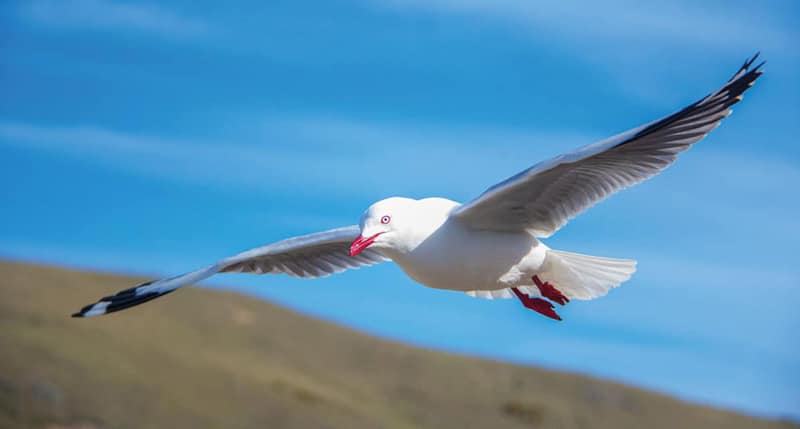Seagulls are fascinating birds that are often found near coastal areas and bodies of water. Their behavior and characteristics have intrigued scientists and nature enthusiasts for years. In this article, foromarbella.com will explore the various aspects of seagull behavior, shedding light on their feeding habits, communication methods, nesting patterns, and more.
The World of Seagulls
Seagulls, also known as gulls, belong to the family Laridae and are part of the larger group of seabirds. They are well adapted to marine environments and are found across the globe, from coastlines to inland lakes and rivers. Seagulls are known for their distinctive appearance, with white plumage, long wings, and hooked beaks.
Feeding Habits: Opportunistic Scavengers
Seagulls are opportunistic feeders, meaning they will eat a wide variety of food depending on what is available. Their diet includes fish, crustaceans, insects, small mammals, and even garbage. They are highly adaptable and have been observed stealing food from other birds and animals. Seagulls also engage in a unique feeding behavior known as “drop feeding,” where they drop hard-shelled prey from a height to break them open.
Communication Methods: Vocalizations and Body Language
Seagulls communicate with each other using a combination of vocalizations and body language. They have a repertoire of calls, including squawks, screams, and cries, which are used for various purposes such as warning others of danger or claiming territory. Body language, such as head movements, wing displays, and postures, also plays a crucial role in their communication, especially during mating rituals and territorial disputes.
Nesting Patterns: Choosing Safe Locations
Seagulls build their nests on the ground or on cliffs, using a combination of grass, twigs, and debris. They typically choose elevated locations to provide safety from predators. Seagulls are colonial nesters, meaning they often form large nesting colonies where multiple pairs breed in close proximity. These colonies provide protection and increase the chances of successful reproduction.
Mating and Reproduction: Bonding and Raising Chicks
During the breeding season, seagulls engage in elaborate courtship displays to attract mates. Males often perform aerial displays and offer food to females as a part of the bonding process. Once the pair has bonded, they work together to build the nest and incubate the eggs. Seagulls are protective parents and will fiercely defend their nests and chicks from potential threats.
Migration: Navigating Vast Distances
Many seagull species are migratory, undertaking long-distance journeys between breeding and wintering grounds. They navigate using a combination of celestial cues, landmarks, and magnetic fields. Migration allows seagulls to access different food sources and exploit favorable climates throughout the year.
Interactions with Humans: Challenges and Adaptations
Seagulls have adapted to urban environments and often come into close contact with humans. While some people enjoy watching these birds, others perceive them as a nuisance. Seagulls have learned to scavenge for food in urban areas, raiding garbage bins and even stealing food from people’s hands. This behavior has led to conflicts between seagulls and humans, especially in densely populated coastal regions.
Seagull Species: Diversity and Characteristics
There are numerous seagull species worldwide, each with its own unique characteristics and adaptations. Some well-known species include the Herring Gull, Great Black-backed Gull, and California Gull. These species vary in size, plumage patterns, and habitat preferences, highlighting the diversity within the seagull family.
Threats and Conservation: Balancing the Ecosystem
Seagulls face various threats to their populations, including habitat destruction, pollution, and disturbance of nesting sites. Conservation efforts focus on protecting their breeding grounds, reducing pollution in coastal areas, and raising awareness about the importance of maintaining a healthy marine ecosystem. Balancing the needs of seagulls and human activities is crucial to ensure the long-term survival of these remarkable birds.
Conclusion
Seagulls are remarkable birds with fascinating behaviors and adaptations. Their opportunistic feeding habits, communication methods, nesting patterns, and interactions with humans all contribute to their unique nature. By understanding and appreciating seagulls, we can foster a harmonious coexistence with these coastal inhabitants.
FAQs
1.Q: Are seagulls aggressive towards humans?
A: Seagulls can display aggressive behavior, especially when they feel threatened or when defending their nests and chicks.
2.Q: What is the lifespan of a seagull?
A: The lifespan of a seagull varies depending on the species. On average, they can live between 10 and 15 years, but some species can live longer.
3.Q: Can seagulls drink saltwater?
A: Seagulls have a specialized exocrine gland above their eyes that helps them excrete excess salt, allowing them to drink saltwater if necessary.
4.Q: How far do seagulls migrate?
A: The distance of seagull migrations varies depending on the species. Some species migrate hundreds or even thousands of miles between their breeding and wintering grounds.
5.Q: Are all seagulls white?
A: No, not all seagulls are white. Some species have different plumage patterns, such as gray, brown, or a combination of colors.

